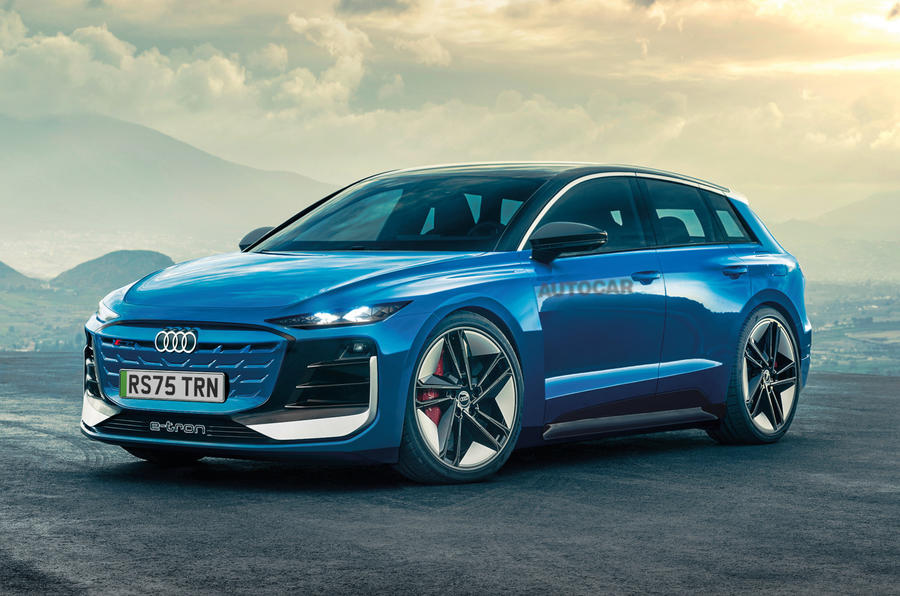Due in 2027, the line-up will get a new platform, advanced tech, fast charging and 700km range.
The next Audi A3 is set to become an electric-only model with a maximum range of more than 700km and the choice of either standard rear- or optional four-wheel drive, sources at the car maker have revealed.
The decision means the popular hatchback and sedan will abandon petrol, diesel, plug-in hybrid and natural gas power to go up against the Mercedes-Benz EQA with a raft of battery and powertrain options and next-generation technology.
Scheduled for launch in 2027, the fifth-generation A3 will be based on the Volkswagen Group’s new skateboard-style SSP (Scalable Systems Platform) electric architecture – the same structure that is set to make its debut on the upcoming Volkswagen ID 4 (pictured below) currently being developed under the internal working title Project Trinity. It will also underpin an Audi sibling model known as Apollon.
The move comes after Audi rejected a proposal to develop a new entry-level electric model on the existing MEB platform, which is used by the Audi Q4 E-tron and closely related Volkswagen ID 4 and Skoda Enyaq iV.
The switch to electric power means standard versions of the A3 will abandon front-wheel drive for the first time since the model’s introduction in 1996, though the most potent models are tipped to adopt a twin-motor, all-wheel-drive set-up reminiscent of the current Audi Sport-fettled A3 variants.
An electric RS3 will be the entry point into the newly electrified performance line-up, being sold alongside rapid and outlandishly styled sporting variants of the upcoming electric Audi A4 and Audi A6 successors. Audi Sport’s transition to an electrified portfolio has kicked off with range-topping variants of the Audi E-tron SUV and Audi E-tron GT, and it is expected to ultimately match the diversity and scope of its current performance range, which comprises highly strung variants of most Audi models.
Instant-torque electric power will see the ‘RS3 E-tron’ outpace the current five-cylinder petrol car in a straight line – so expect a sub-3.8sec 0-100km/h time, and the innovative torque-vectoring functionality fitted to Audi’s existing fast EVs will no doubt trickle down to upcoming entrants to mimic the combustion car’s dynamic agility. It could also be the first of a breed, with rivals BMW, Mercedes-Benz and Volkswagen yet to unwrap electrification plans for their own hottest hatchbacks.
The A3 line’s electrification aligns with recent comments by Audi CEO Markus Duesmann that all new Audi models will be exclusively electric from 2026.
Speaking to German magazine Wirtschaftswoche, Duesmann explained how this switch will be underpinned. “In our current ICE portfolio, we are using three different architectures, and our BEV [battery-electric vehicle] offer is already based on two different architectures: the MEB and PPE [Premium Platform Electric]. In the second half of this decade, we will introduce the SSP to form one strong mechatronic platform,” said Duesmann, who is also R&D boss of the Volkswagen Group.
Among the advantages offered by the new SSP architecture over today’s MEB structure are a lower floor height and greater modularity for increased differentiation between models.
The SSP platform is also designed to support a new 800V electric architecture. This will offer significantly faster charging times than the 400V system of existing MEB-based models and enable speeds of up to 270kW, which is good for a 130km top-up in 10 minutes. Duesmann said the SSP architecture will use what he calls a “unified cell format” and offer a range of up to 700km. Although the SSP platform is being developed to accept solid-state batteries, they are not planned to be offered with the next A3.
Automotive Daily Network partner Autocar has been told that the next A3 has been conceived as a five-door hatchback and four-door sedan, both with incremental increases in dimensions. Those privy to early design proposals say Audi designers have taken full advantage of the packaging solutions offered by the dedicated SSP platform, providing the A3 with altered proportions, including shorter overhangs, a shorter bonnet line, a longer cabin and larger wheelhouses.
Will Audi make an even more compact EV?
With the next-generation A3 primed to serve as the entry point into Audi’s new-era electric car line-up, and the current Audi A1 and Audi Q2 confirmed to bow out at the end of their life cycles, the firm looks to be following a similar path to Mercedes: abandoning low-margin entry models in favour of larger, more profitable ones.
Indeed, Audi has not followed sibling brands Volkswagen, Skoda and Seat in previewing a compact MEB-based urban EV for launch in 2025, which raises questions about the fate of 2019’s Audi AI:ME concept: a striking vision of what an autonomous, urban-oriented Audi EV could look like.
Styling cues showcased on that concept have been carried through to subsequent studies – as has its emphasis on self-driving functionality – but as each brand in the VW Group strives to carve out a defined, bespoke identity in the electric era, Audi will look to strengthen its premium image by moving away from more accessible propositions.
That weakens the prospect of any production version of the AI:ME, although the chances are that its defining characteristics will still influence the next-generation A3, despite that car using the new SSP platform, instead of the concept’s MEB.
Automotive Daily





